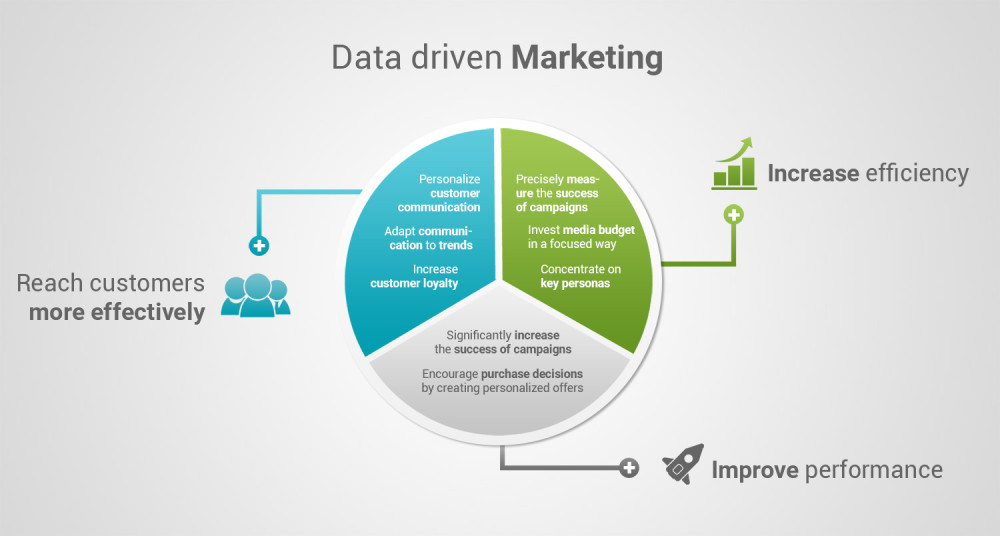How to Use Data Analytics to Drive Marketing Decisions
In the digital age, data is the backbone of effective marketing strategies. Leveraging data analytics to inform marketing decisions can significantly enhance the efficiency and impact of your campaigns. This blog post explores how you can use data analytics to drive marketing decisions and achieve better results.
Understanding Data Analytics in Marketing
Data analytics involves collecting, processing, and analyzing data to extract actionable insights. In marketing, data analytics helps businesses understand customer behavior, measure campaign performance, and identify trends. By leveraging these insights, marketers can make informed decisions that improve targeting, personalization, and overall campaign effectiveness.
Steps to Use Data Analytics for Marketing Decisions
1. Define Clear Objectives
Before diving into data analytics, it’s crucial to establish clear marketing objectives. Whether it's increasing brand awareness, driving sales, or improving customer retention, having well-defined goals will guide your data collection and analysis efforts.
- Specific Goals: Set specific, measurable, achievable, relevant, and time-bound (SMART) goals. Clear objectives help in focusing your analytics efforts and measuring success accurately.
2. Collect Relevant Data
Gathering the right data is essential for effective analysis. Data can be collected from various sources, including website analytics, social media platforms, email marketing tools, and customer feedback.
Customer Data: Collect data on customer demographics, purchase history, and online behavior. Understanding your audience is key to creating targeted marketing campaigns.
Campaign Data: Track data related to your marketing campaigns, such as click-through rates, conversion rates, and engagement metrics. This helps in evaluating the performance of your campaigns.
3. Utilize Advanced Analytics Tools
Using advanced analytics tools can streamline data collection, processing, and analysis. Tools like Google Analytics, HubSpot, and Tableau provide comprehensive insights into your marketing efforts.
Google Analytics: Offers detailed insights into website traffic, user behavior, and conversion tracking. It’s a valuable tool for understanding how users interact with your site.
HubSpot: Provides marketing automation, analytics, and CRM functionalities. It helps in tracking leads, managing campaigns, and measuring ROI.
4. Analyze Customer Behavior
Understanding customer behavior is critical for making data-driven marketing decisions. Analyze data to identify patterns, preferences, and pain points in the customer journey.
Segmentation: Segment your audience based on demographics, behavior, and purchase history. Tailoring your marketing efforts to different segments can improve relevance and engagement.
Customer Journey Mapping: Map out the customer journey to identify touchpoints and optimize the user experience. This helps in creating targeted campaigns that address specific stages of the journey.
5. Measure Campaign Performance
Regularly measure the performance of your marketing campaigns to understand what’s working and what’s not. Use key performance indicators (KPIs) to evaluate the effectiveness of your efforts.
KPIs: Track KPIs such as conversion rates, return on investment (ROI), and customer acquisition cost (CAC). These metrics provide insights into the success of your campaigns.
A/B Testing: Conduct A/B tests to compare different versions of your campaigns. This helps in identifying the most effective strategies and optimizing future efforts.
6. Predictive Analytics
Predictive analytics uses historical data and machine learning algorithms to forecast future trends and behaviors. It enables marketers to anticipate customer needs and plan proactive strategies.
Trend Analysis: Analyze historical data to identify trends and patterns. Use these insights to predict future behavior and adjust your marketing strategies accordingly.
Personalized Recommendations: Leverage predictive analytics to offer personalized product recommendations. This enhances the customer experience and increases the likelihood of conversions.
7. Optimize Marketing Strategies
Data analytics provides valuable insights that can be used to optimize your marketing strategies. Continuously refine your campaigns based on data-driven insights to improve performance and achieve better results.
Content Optimization: Use data to understand what type of content resonates with your audience. Optimize your content strategy to focus on high-performing topics and formats.
Channel Optimization: Identify the most effective marketing channels for reaching your audience. Allocate your resources to channels that deliver the best ROI.
Benefits of Data-Driven Marketing Decisions
1. Improved Targeting
Data analytics helps in identifying and targeting the right audience segments. This ensures that your marketing efforts are directed towards individuals who are most likely to engage with your brand and convert.
- Precision Targeting: Use data to create detailed customer profiles and target your campaigns with precision. This increases the relevance and effectiveness of your marketing efforts.
2. Enhanced Personalization
Personalization is key to engaging modern consumers. Data analytics enables you to create personalized experiences by understanding individual customer preferences and behaviors.
- Customized Experiences: Use data to tailor your marketing messages, offers, and content to individual preferences. Personalized experiences lead to higher engagement and loyalty.
3. Better ROI
By making informed decisions based on data, you can optimize your marketing spend and achieve better ROI. Data-driven strategies help in identifying the most cost-effective approaches and eliminating wasteful spending.
- Efficient Resource Allocation: Allocate your marketing budget to strategies and channels that deliver the best results. This maximizes the impact of your marketing efforts.
4. Proactive Decision-Making
Data analytics provides the ability to anticipate trends and changes in the market. This allows marketers to make proactive decisions and stay ahead of the competition.
- Trend Forecasting: Use data to identify emerging trends and adapt your strategies accordingly. Staying ahead of trends ensures that your marketing remains relevant and effective.
Data analytics is a powerful tool that can drive informed marketing decisions and significantly enhance the effectiveness of your campaigns. By defining clear objectives, collecting relevant data, utilizing advanced analytics tools, and continuously optimizing your strategies, you can leverage data to improve targeting, personalization, and ROI. Embrace data-driven marketing to stay competitive and achieve better results in today’s dynamic digital landscape.


